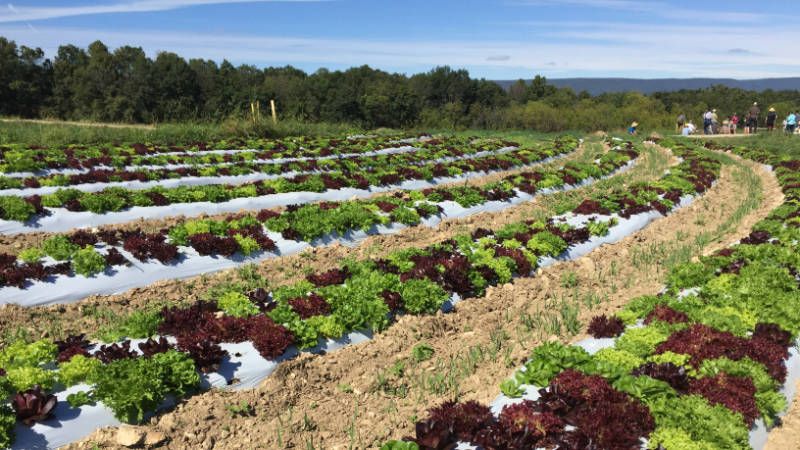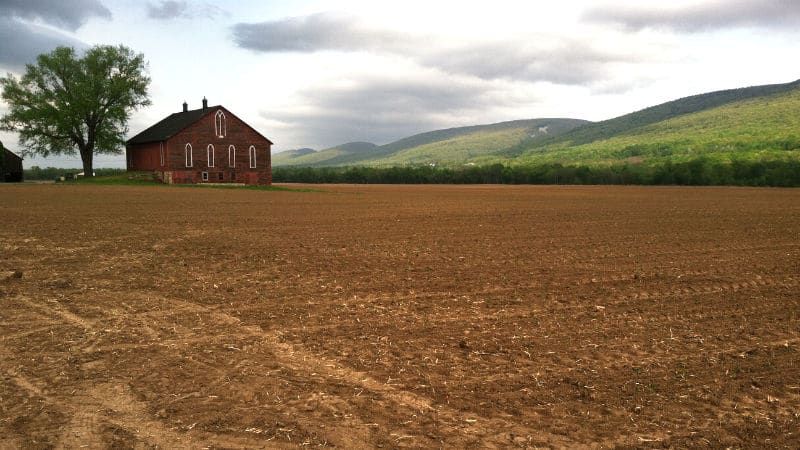Organic No-Till: Searching for the Holy Grail in Agriculture
Published on by Water Network Research, Official research team of The Water Network in Technology
By Lisa Blazure and Lamonte Garber. Photos: Lisa Blazure
Consumer awareness about healthy foods — and how those foods are produced — continues to increase. The growth of the organic food industry reflects this trend. U.S. organic product sales climbed 12.4% in 2020, breaking the $60 billion mark for the first time and more than doubling the previous year’s growth, according to the Organic Trade Association.
Consumers who buy organic products seek food grown without the use of inorganic fertilizers, chemicals, or antibiotics. USDA-certified organic foods are grown and processed according to federal guidelines addressing, among many factors, soil quality, animal raising practices, pest and weed control, and use of additives. Organic producers rely on natural substances and physical, mechanical, or biologically based farming methods to the fullest extent possible. That organic foods are much less likely to carry residues of synthetic chemicals is likely this industry’s greatest marketing advantage.
Farming without synthetic chemicals offers environmental advantages as well, such as reducing farmers’ and farm workers’ chemical exposure and less risk to soil, water resources, and pollinators. Of utmost interest to scientists at Stroud™ Water Research Center is the potential of organic farming to reduce the exposure of aquatic macroinvertebrates to toxins.
However, there can be a significant downside of organic production, particularly in regard to raising grains like corn and soybeans. Most organic grain producers rely on broad-scale tillage practices for weed control that can result in unsustainable levels of soil erosion, which can degrade soil and lead to excessive sedimentation in local streams and rivers. This is a particular concern for Pennsylvania, given that many farms have hilly and sloped fields that make them more susceptible to erosion as water concentrates and flows downhill. In many places, this muddy runoff water reaches a stream and then has additional impacts on the fish, insects, and water quality.
A variety of red and green leaf lettuces.

Smaller acreage organic vegetable farms can more easily manage soil erosion losses using various management practices. They can maintain permanent grass strips between crop rows to control the flow of rainwater, plant on flatter fields, pull weeds by hand, grow diverse crops to break disease cycles, and build soil organic matter with the additions of compost and manure. Organic grazing operations — also called “grass-based” farms — have particularly low soil erosion rates, given their reliance on permanent pasture for livestock feeding.
The bigger challenge is with organic grain production, which supplies organic chicken, pork, bread, pasta, and breakfast cereals. Farmers typically grow these crops on much larger fields, sometimes hundreds of acres in size. Because they do not have the option to use herbicides, these farms typically control weeds with heavy tillage and midseason cultivation that digs out small weeds between crop rows. Tillage practices leave the fields vulnerable to soil erosion from both wind and water.
A red building tucked in the middle of a vast tilled field.

Many conventional farms now use a planting technique called no-till that largely eliminates any plowing or disking of the soil. No-till planting prevents damage to soil structure and protects the soil from wind and rain-driven erosion. However, no-till agriculture generally relies on herbicides to control weeds which can be a significant environmental threat. Some innovative no-till farmers have developed strategies of crop rotation and cover crops to reduce, but not eliminate, the amount of herbicides used. Nevertheless, widespread use of pesticides is a leading environmental concern globally.
The National Organic Program Rule, Section 205.203, Soil Fertility and Crop Nutrient Management Practice Standard, does not define specific land practices that producers must use. It does, however, identify general soil management and environmental protection objectives. It states that organic producers must only use tillage and cultivation practices that “maintain or improve the physical, chemical, and biological properties of soil.”
Thus, in a strict interpretation of that rule, if there are any signs of soil erosion, then the farm falls short of the organic program standards. Soil erosion is neither maintaining nor improving the system. Producing organic grain crops at the expense of the precious topsoil layer is not sustainable. Therein lies the dilemma; farms that are trying to minimize one type of environmental risk (chemicals) are making themselves vulnerable to a different type of environmental risk (soil loss and runoff impacts to streams).
In early 2019, Pennsylvania’s Governor Wolf shared his vision to make Pennsylvania the top organic state in the nation. Unfortunately, the state has very few areas that are suitable for large-scale organic grain production without the risk of significant soil erosion. In Pennsylvania, all farms must manage their fields to maintain the T-value, which the U.S. Department of Agriculture has determined to be a “tolerable” amount of soil loss that still maintains crop productivity. An organic certification does not exempt farms from meeting Pennsylvania’s soil erosion requirements.
Our country needs to be very selective about where these organic crops are grown. Midwestern farms are relatively flat and may have a reduced risk of water-induced erosion when proper conservation practices are used. The semi-arid crop fields in the Great Plains states are very vulnerable to wind erosion — sometimes at a scale comparable to the infamous Dust Bowl events. In South Dakota during the spring of 2021, a 34,000-acre organic farm without adequate conservation practices experienced significant soil loss.
The Stroud Center has been a long-term supporter of no-till farming and planting cover crops, which minimize soil erosion and improve soil structure and water infiltration rates. We are actively working with the Pennsylvania No-Till Alliance and the Pennsylvania Soil Health Coalition toward these ends. We are also collaborating with PASA Sustainable Agriculture on their innovative Soil Health Benchmark Study.
Taxonomy
- Soil
- Soil & Water Assessment Tools
- Soil Management
- Soil Conservation
- Soil Carbon
- Soil Science
- soil microbiome